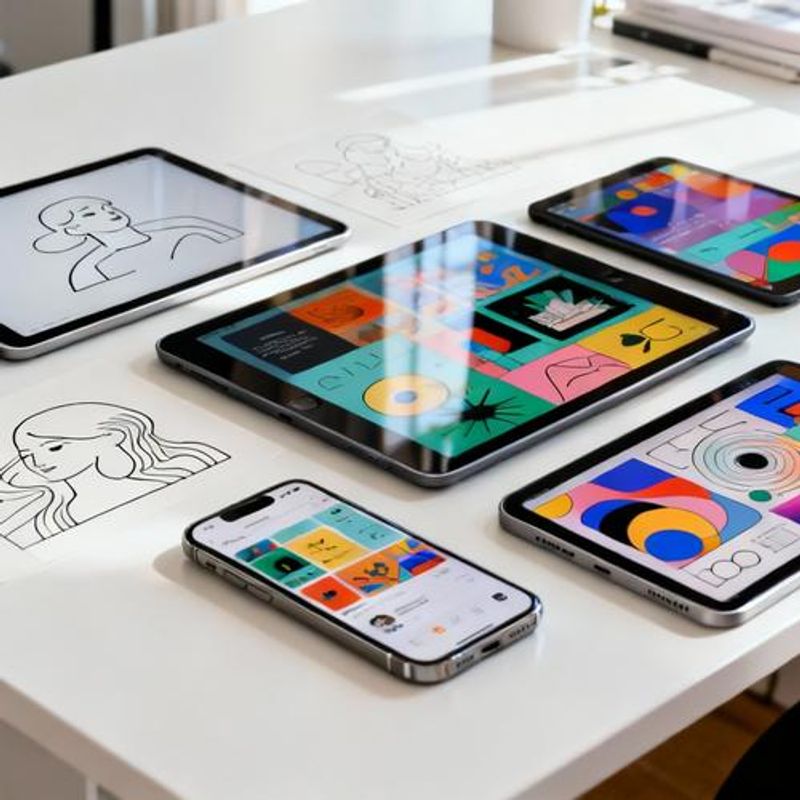The Ultimate Guide to Free Illustration Resources for Design Students and Beginners

Starting your design journey shouldn't drain your wallet. Whether you're working on your first portfolio project, creating presentations for class, or building a personal website, finding high-quality illustrations can feel overwhelming—especially when budget constraints are real. This comprehensive guide reveals the best free illustration resources that design students and beginners can access today, along with practical tips for using them effectively and legally in your projects.

Why Free Illustration Resources Matter for Design Students
As a design student or beginner, you're constantly building skills while managing tight budgets. Premium illustration libraries can cost hundreds of dollars annually—money that's often better spent on design software or courses. Free illustration resources solve this dilemma by providing professional-quality visuals that help you create compelling projects without compromising on visual appeal. However, navigating licensing terms, finding high-quality options, and avoiding overused graphics requires strategic knowledge that many beginners lack.
Quick Reference: Top Free Illustration Resources
Before diving deep, here are the essential free illustration resources every design student should bookmark:
- Undraw - Customizable SVG illustrations with consistent style
- Freepik - Extensive library with free tier (attribution required)
- Open Doodles - Hand-drawn style illustrations for web and print
- Pixabay - Mixed media platform with vector illustrations
- Storyset - Animated and static illustrations for storytelling

Platform-by-Platform Breakdown: Where to Find Quality Free Illustrations
Each platform offers unique advantages and limitations. Undraw excels in customizable SVG illustrations perfect for web design projects—you can change colors to match your brand palette instantly. The consistent style across all illustrations makes it ideal for creating cohesive design systems. Freepik provides the largest variety but requires attribution for free users, making it suitable for academic projects where crediting sources is standard practice. Open Doodles offers a distinctive hand-drawn aesthetic that works exceptionally well for friendly, approachable designs like educational materials or personal portfolios. Pixabay combines illustrations with photos and vectors, providing one-stop convenience for mixed media projects. Storyset specializes in storytelling visuals, perfect for presentation slides or explaining complex concepts through visual narratives.
Understanding Licensing: What You Can and Cannot Do
Creative Commons licensing varies significantly between platforms. CC0 (public domain) illustrations can be used freely without attribution, modified extensively, and even used commercially. Attribution required licenses (CC BY) need proper crediting but offer similar usage freedom. Some platforms use custom licenses that may restrict commercial use or require specific attribution formats. Always download the license information with your illustrations and create a credits document for each project. For student portfolios, most licensing terms are flexible, but if you're doing freelance work or internships, verify commercial usage rights before finalizing any design.
Practical Workflow: From Search to Implementation
Start by defining your project's visual mood and target audience before searching. Use specific keywords rather than generic terms—search for 'remote work illustration' instead of 'people working.' Download illustrations in the highest available resolution and original format (SVG when possible for scalability). Create a project folder system that includes subfolders for different illustration styles and a 'licenses' folder containing usage rights documentation. Before using any illustration, test it at different sizes to ensure it maintains quality and readability across your intended applications.

Common Mistakes That Sabotage Your Design Projects
Mixing inconsistent illustration styles within a single project creates visual chaos and appears unprofessional. Using low-resolution files for print projects results in pixelated, unusable graphics. Ignoring attribution requirements can lead to copyright issues later. Over-relying on the same popular illustrations makes your work look generic—professors and potential employers notice when they see the same graphics repeatedly. Failing to customize colors or elements to match your project's branding wastes the unique advantage of SVG illustrations. Finally, using illustrations that don't align with your content or audience can confuse viewers and weaken your message's impact.
Level Up Your Design Skills with Strategic Illustration Use
Free illustration resources are powerful tools for building impressive design portfolios without breaking the bank. Start by bookmarking the platforms mentioned in this guide and experimenting with different styles in low-stakes personal projects. Create a systematic approach to organizing and licensing your illustration library—this professional habit will serve you well throughout your design career. Remember, the goal isn't just to find free graphics but to use them strategically to enhance your storytelling and visual communication skills. Ready to transform your next project? Begin with Undraw or Open Doodles for beginner-friendly options, and gradually explore more specialized platforms as your skills develop.